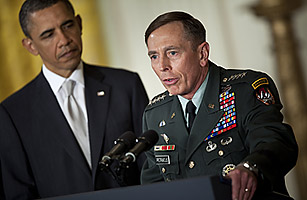
It was inevitable that Barack Obama’s decision to draw down 33,000 troops from Afghanistan by the end of next summer would be controversial. Most Democrats — as well as a growing cohort of Republicans and, according to the polls, a majority of Americans — were looking for a bigger, faster pullout. The Pentagon was hoping for something slower. General David Petraeus, the commander of NATO forces in Afghanistan, must be particularly disappointed that the counterinsurgency strategy that has made progress in the Taliban’s southern heartland won’t be attempted in the rougher terrain of Afghanistan’s east. The problem, as ever, is that there are no clear paths to success and far too many moving pieces in Afghanistan. The President took into account the trajectories of all those pieces and made some difficult choices that may not prove unwise.
In the past year, the military situation on the ground in Afghanistan has gotten better, but our relations with the governments of Afghanistan and Pakistan have gotten worse. The Afghan national-security forces have become stronger and the Taliban weaker. Osama bin Laden is dead and his network crippled, but the U.S. economy languishes, and the national debt is soaring. All of these were factors in Obama’s decision, but some were stronger than others. You don’t hear much about strengthening the Afghan central government from U.S. officials anymore, but you do hear a lot about strengthening, and maintaining, the Afghan security forces so the Taliban can’t take over the country. Nation building has been replaced by army building, a difficult but somewhat more plausible goal.
“The Taliban no longer own the districts around Kandahar city,” Petraeus told me a few weeks ago. “They’ve had to move much farther from population centers … to stage their operations,” which are most often individual attacks on Afghan government officials and facilities. This is significant, if iffy, progress. Petraeus said his forces are now trying to solidify those gains, training local police and militias, trying to build governance from the bottom up . But there is real trouble in the east, where the Haqqani Taliban network, which gets direct support from Pakistan, still can launch aggressive small-unit operations against U.S. forces. The general said he hoped to make a major push in the east starting this fall.
That may still happen, but not at the strength Petraeus — who will leave Afghanistan this July — had hoped. This is the most controversial piece of Obama’s decision: “The President has decided against an all-out COIN [counterinsurgency] campaign in the east,” a senior Administration official told me. There are both logic and frustration involved here. COIN has helped protect and secure the population in flat, densely populated areas like Baghdad and perhaps Kandahar. Afghanistan’s eastern border area has fewer people and lots of daunting mountains; it would be a long, hard slog, at best. The real frustration, and anger, in the U.S. military is that our putative ally Pakistan is largely responsible for the carnage and destruction in the east.